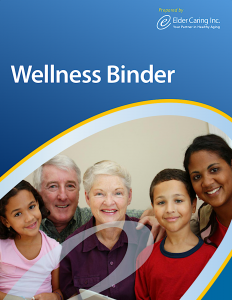Newsletter July 2008
Elder Care Advice From The Managing Director
This summer, I decided it was time for a change in my garden. I wanted my shady backyard to be transformed into a soothing oasis where I could entertain friends and relax after a long day. And so it was that I found myself last week, watching in anxious horror as my yard was torn up and materials and workers came in and out – taking away my quiet backyard and replacing it with a muddy mess. What was I thinking? Had I made a good decision? Would it all come together in the end? My garden is now finished and the new water feature is trickling away restoring that calm I had been looking for in the first place, washing away the anxiety I felt as we transitioned from old to new. Transitions and changes can bring a great deal of anxiety and stress, to us and those around us. While my garden represents a small transition and a short period of stress, other transitions such as moving from ones’ home to retirement to a retirement community are more difficult to make. This issue of Elder Caring News is geared to discussing these types of transitions and to helping families determine when to move and what type of move would be most suitable – be it to a life lease, a condo, a senior apartment, supportive housing or long term care. It is often said that great new beginnings come from some other beginning’s end, so whatever transitions you are facing, it is my hope you will be able to face them with excitement and hope.
When Staying At Home Is No Longer An Option
Let’s call it like it is- most people don’t like to move and most older individuals certainly do not want to leave the family home and move into a more supported environment. There are of course many reasons that make a move so difficult, not least of which, is the overwhelming thought of emptying cupboards, basements and bedrooms. When the ‘home’ is no longer safe- is usually the determining factor of when a move should be made. But sometimes it is hard to determine when a move to a higher level of care is appropriate. For older couples it is sometimes advisable to plan a move while the couple is still well enough to adjust to a new setting. However many will only consider a move after a spouse dies.
Once it has been decided that a move is necessary, there are several options to consider. Most seniors strongly resist moving into an “old folk’s home” for fear of the negative images they hold. There are several options available in today’s marketplace including: condominiums, life lease apartments, senior’s apartment buildings, supportive housing, retirement residences, and long term care facilities. An open discussion about what the senior would like and their current and future care needs is a great place to start.
Managing Incontinence
Did George Smitherman, Ontario’s Minister of Health, highlight the problem when he donned adult diapers to make a point about the budget or did he step into something he would rather not have? There’s nothing pretty about incontinence, yet it’s a fact of life affecting more and more of us, especially women in their middle years.
It’s time to take adult incontinence products (adult diapers or Adpers™ as I prefer to call them) out of the closet. Expect to find them
in grocery stores everywhere as they take their rightful place in the personal hygiene section. It is estimated that more than 1.5 million Canadians experience loss of bladder or bowel control. Women are affected more than men, with one in four adult women experiencing urinary incontinence and only one in ten men being affected during their lifetime. Although incontinence is not an automatic part of aging, the rate is higher among seniors, with one in every five seniors experiencing urinary incontinence.
Phone: 416-658-8887 Toll Free:866-473-8887 Email:info@eldercaring.ca www.eldercaring.ca
Leave a reply




Leave a reply